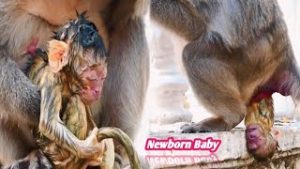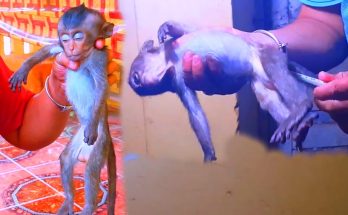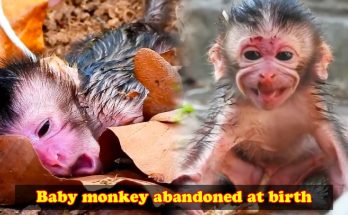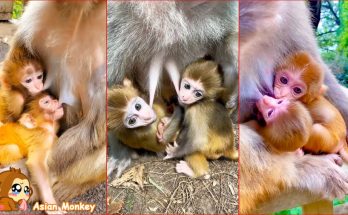
Introduction
The miracle of birth is a phenomenon that transcends species, but for primates, especially monkeys, giving birth in the wild presents unique challenges and remarkable survival strategies. Unlike humans, mother monkeys must endure labor and delivery without medical assistance or structured support, relying solely on instinct, experience, and, at times, the help of their troop. This article delves into the extraordinary journey of mother monkeys during childbirth, examining their labor process, survival techniques, and the trials they face in the untamed wilderness.
The Biology of Monkey Reproduction
Gestation Period
Monkey gestation periods vary depending on the species. For example:
- Rhesus macaques: 164 days
- Baboons: 180 days
- Capuchin monkeys: 150–160 days
- Spider monkeys: 226–232 days
Unlike many mammals, monkeys typically give birth to a single infant, with twins being an uncommon occurrence. During pregnancy, mother monkeys experience hormonal changes similar to humans, affecting their behavior, feeding patterns, and social interactions.
Signs of Impending Labor
In the wild, the signs of labor are subtle but observable. These include:
- Swollen vulva: A visible sign in the later stages of pregnancy.
- Behavioral changes: Mothers may isolate themselves or exhibit increased grooming behavior.
- Vocalizations: Some species vocalize more frequently before birth.
- Restlessness and discomfort: Frequent shifts in posture and movement.
The Labor and Delivery Process
Stages of Labor
Monkey labor, much like human labor, follows three stages:
- Early Labor: Characterized by contractions and the positioning of the baby for delivery.
- Active Labor: Intense contractions lead to the baby’s emergence.
- Delivery of the Placenta: The placenta is expelled shortly after birth, often consumed by the mother to avoid attracting predators.
Challenges Faced by Mother Monkeys
Monkeys giving birth in the wild face numerous challenges, such as:
- Predation Risks: Weak and vulnerable, laboring mothers attract predators such as leopards, eagles, and snakes.
- Environmental Hazards: Harsh weather, lack of shelter, and the risk of injury during tree-based births.
- Complications: Difficult labor or stillbirths without medical intervention can be fatal.
- Troop Interactions: Some monkey species receive support from their troop, while others may face aggression.
Survival Strategies During Birth
Seeking Safety
Most mother monkeys seek a secluded, safe location before labor. This can be within dense foliage, a tree branch, or even a hidden spot on the ground.
Post-Birth Care
Immediately after birth, the mother ensures her baby’s survival by:
- Cleaning the infant and severing the umbilical cord (often by chewing it).
- Encouraging the newborn to nurse for essential colostrum.
- Staying mobile to avoid predators while keeping the infant secure.
The Role of the Troop
Supportive Behavior
Certain primate species, such as bonobos and baboons, have been observed offering support to laboring mothers. Older females, known as “midwives,” may assist in comforting and protecting the mother.
Aggression and Neglect
Conversely, in more hierarchical species, higher-ranking females may attempt to dominate or even harm infants from lower-ranking mothers, presenting an additional challenge for new mothers.
Conclusion
Mother monkeys endure an arduous yet instinct-driven labor process, demonstrating remarkable resilience and adaptation to the wild’s unforgiving conditions. Their ability to give birth, care for their offspring, and reintegrate into their troop speaks to the incredible survival mechanisms that have allowed primates to thrive for millennia. By studying their birth processes, we gain valuable insight into primate behavior, evolution, and the bonds that unite them within the animal kingdom.


